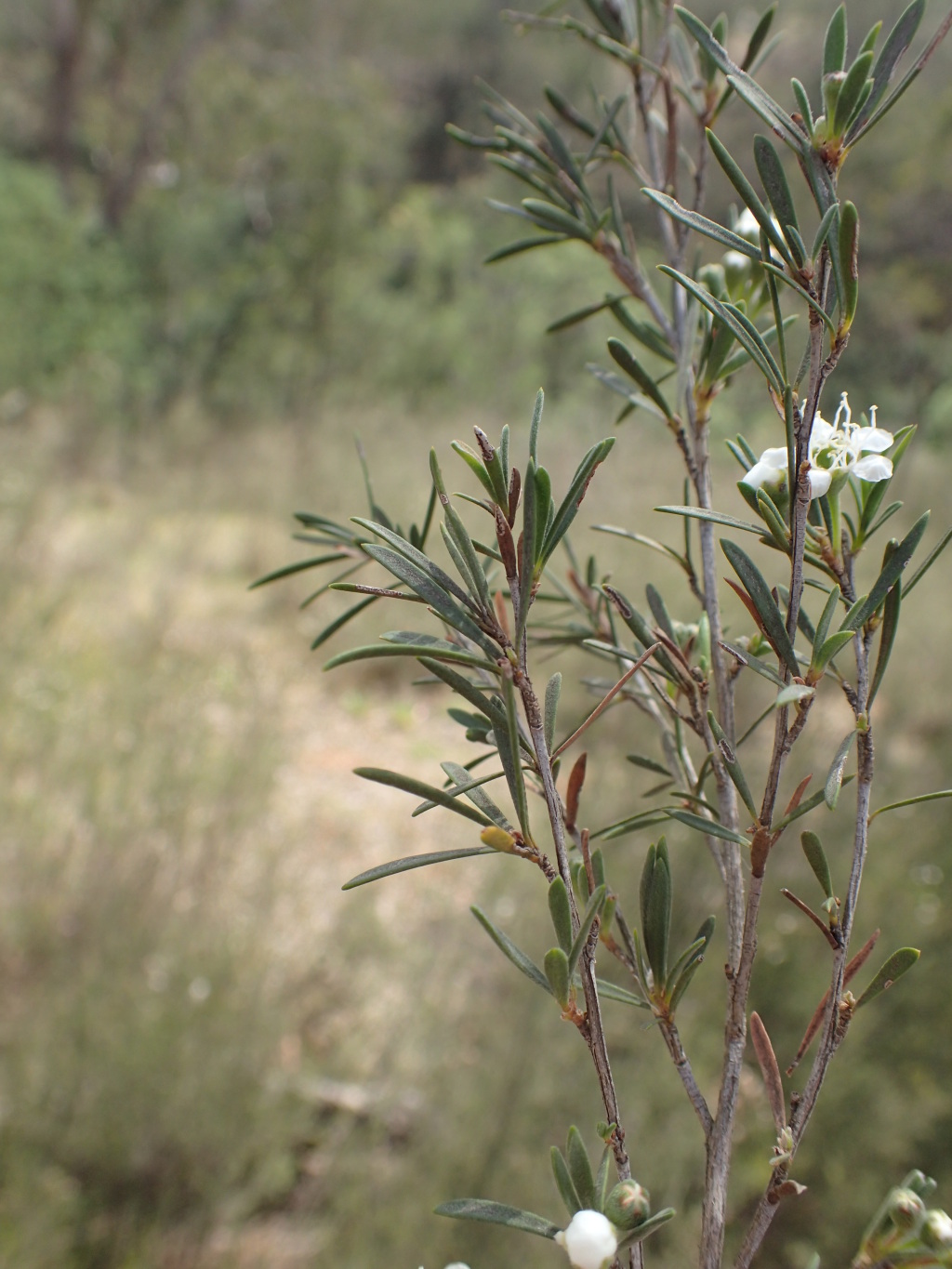Kunzea phylicoides
(A.Cunn. ex Schauer) Druce Slender BurganErect shrub to 3 m high; branch tips drooping; bark fibrous to corky; young stems pubescent. Leaves alternate, linear to linear-oblanceolate, 7–25 mm long, 1–2 mm wide, bright green, finely pubescent to glabrous, more or less flat; apex acute to acuminate; margins entire; petiole 0.5–1 mm long. Flowers white, 1, 2 or 3 in upper axils forming, leafy racemes; pedicels 3–6 mm long, with appressed hair; floral bracts absent; hypanthium with appressed hair or glabrescent, rugulose; sepals green, reddish at base, triangular, 1–1.5 mm long; petals orbicular, c. 1.5–2.5 mm diam.; stamens white, usually 25–35 sometimes many more, 1–4 mm long, some shorter than petals; style 1.5–2.5 mm long; ovary usually 3-celled. Fruit 2.5–4 mm long, 3–5 mm diam., not woody, dehiscent by terminal valves. Flowers Nov.–Feb.
VVP, GipP, Gold, EGL, EGU, HSF, HNF, Strz, VAlp. Also NSW, ACT. Apparently confined to sandy and rocky banks of the Snowy River and its major tributaries (e.g. Deddick R., Murrindal R.), from the New South Wales border to near Buchan.
Distinguished from other members of the Kunzea ericoides complex by its slender, upright to slightly weeping habit, more fibrous or corky bark, leafy, racemose inflorescences and flowers with about twice as many stamens.
Apparently hybridises with Kunzea peduncularis along the Snowy River and its tributries. Application of the names K. phylicoides and Kunzea sp. 1 sensu Fl. Victoria 3:1022 (1996) has apparently been confused due to the presence of these hybrids.
 Spinning
Spinning